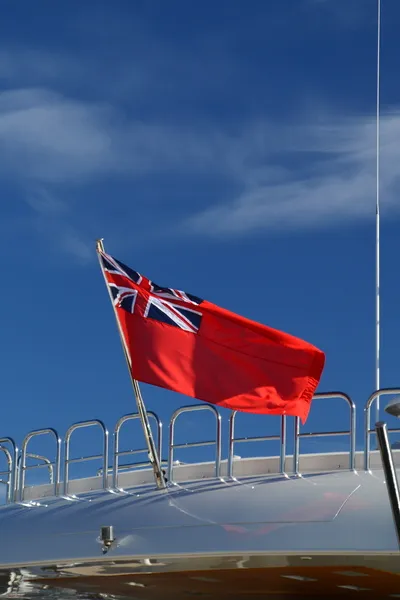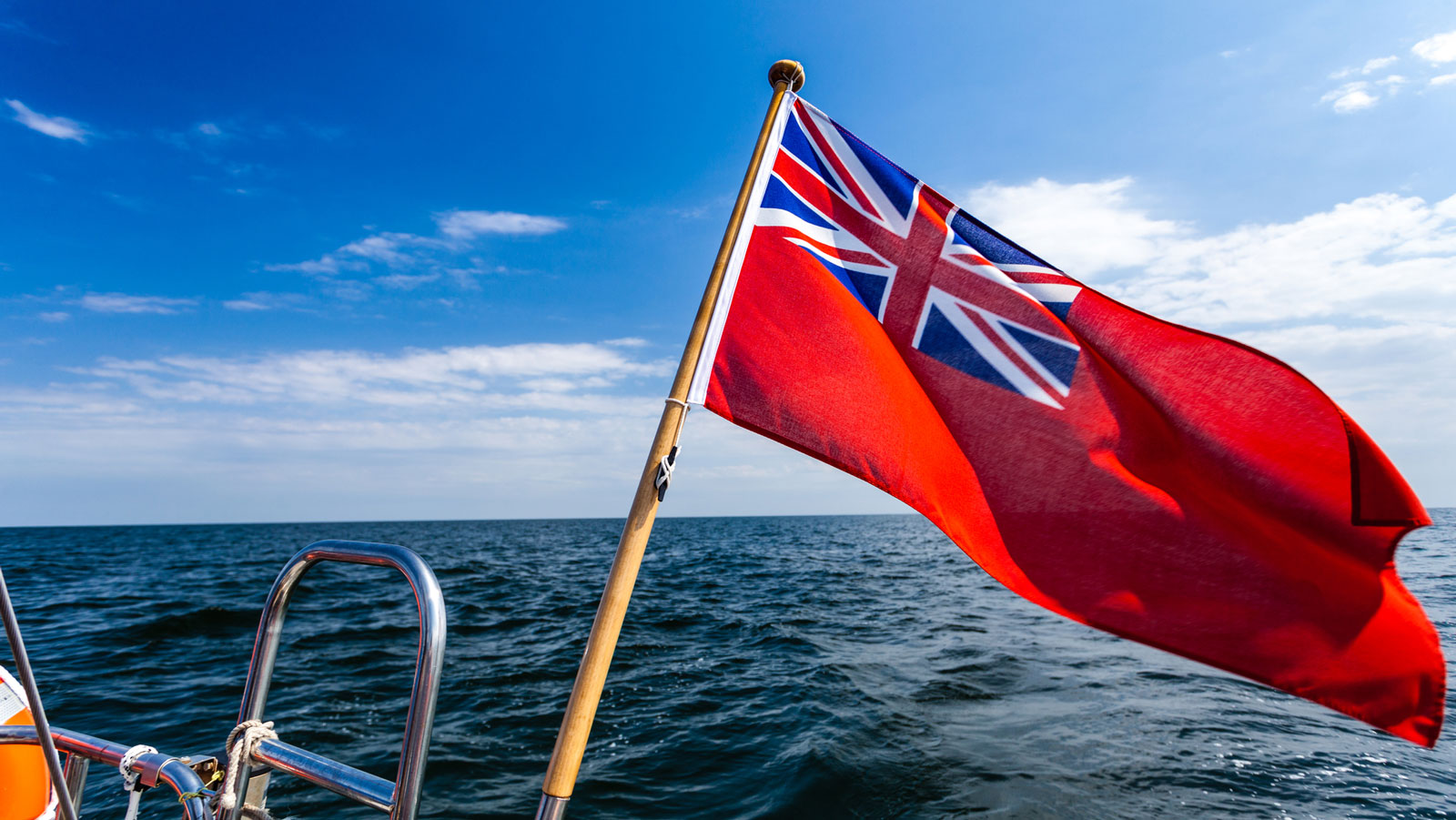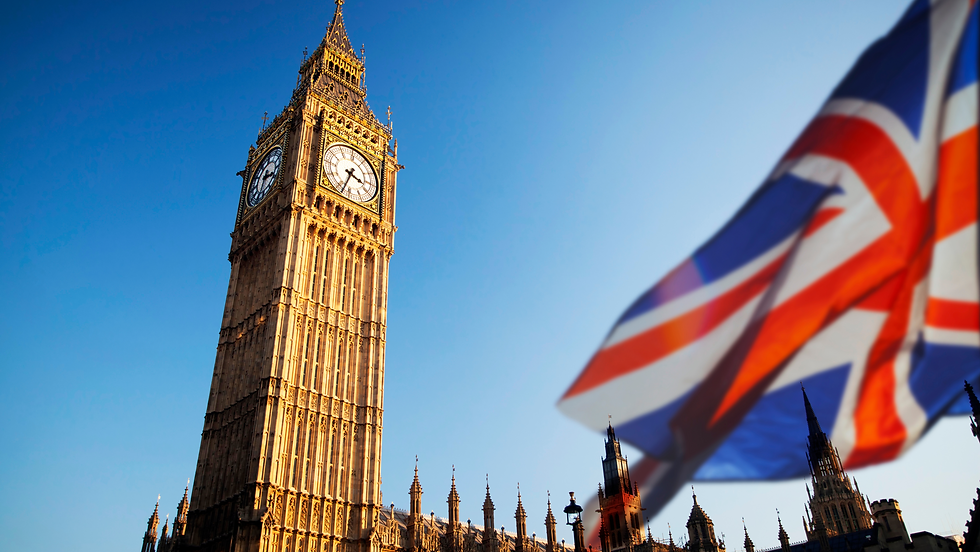Red Ensign Group Yacht Code - Part B | Marine training course
Learn the construction and operational standards of reg b.

Red Ensign Group Yacht Code (REG Code) was implemented to replace two codes: Part A to Large Yacht Code 3 (LY3) & Part B to Passenger Yacht Code (PYC).
REG B includes requirements to be met by passenger yachts carrying between 12 and 36 passengers on international voyages, with respect to the International Convention for the Safety of Life at Sea, 1974 (SOLAS 1974).
Enroll in this course and learn the design criteria, construction standards and other safety measures for pleasure yachts to which this Code apply.
Our team remains available to provide you with any further information you may need. Contact us by writing to [email protected] .

Duration and price
Online course
Duration: 2 days
Price: EUR 600,00 (plus VAT, if applicable)
Physical classroom at Greece's facilities
Price: EUR 650 (plus VAT, if applicable)
Course objectives
Content summary.
- Introduction to the RedEnsign Group
- Application to the code Part B
- Load Line Convention
- Construction requirements for yachts up to 36 passengers
- Stability requirements & damage stability
- Fire protection, detection and extinction
- Life saving appliances and means of escape
- Radiocommunication, safety of navigation
- Accommodation and recreational facilities requirements
- Requirements for sailing vessels
- Protection of personnel
- Manning, Certification and Hours of Work
- Surveys & Certification
Target audience
- Shore personnel of maritime companies managing yachts
- Crew of yachts
Certificate
Request further information, explore the global marine training calendar courses, download the full marine training portfolio.
| Clasification Society 2024 - Version 9.40 | |
| . Where a change in vessel particulars reaches a new regulatory threshold (i.e. 500GT, >85m Loadline Length etc) compliance with the relevant provisions applicable to a new vessel of that size is required. Detailed proposals regarding any such alternations or modifications shall be submitted to the Administration for the purpose of review and comment at the earliest possible opportunity. or ILLC apply in part but some provisions have been modified then the text of all of that Part of the Convention has been incorporated into the body text of the Code for consistency and ease of reference. To readily determine what is “new” drafting and what, in essence, are unmodified Convention provisions, then in the body text of the Code- (see Annex L) and those of a appropriate January 2019: and shall include, as a minimum, the elements listed under ‘Engineering Analysis Elements’ in the relevant chapter. | |
Cookies on GOV.UK
We use some essential cookies to make this website work.
We’d like to set additional cookies to understand how you use GOV.UK, remember your settings and improve government services.
We also use cookies set by other sites to help us deliver content from their services.
You have accepted additional cookies. You can change your cookie settings at any time.
You have rejected additional cookies. You can change your cookie settings at any time.
- Maritime and shipping
- Maritime safety
- Life saving appliances (LSA)
Red Ensign Group yacht code
The code of safe practice for large commercial yachts.
MSF1100 REG Division of responsibilities
ODS , 17.5 KB
This file is in an OpenDocument format
The code came into force on 1 January 2019 and combines the large yacht code version 3 and the passenger yacht code .
- division of responsibilities
Updates to this page
An updated division of responsibilities document has been created.
First published.
Sign up for emails or print this page
Related content, is this page useful.
- Yes this page is useful
- No this page is not useful
Help us improve GOV.UK
Don’t include personal or financial information like your National Insurance number or credit card details.
To help us improve GOV.UK, we’d like to know more about your visit today. Please fill in this survey (opens in a new tab) .

Rules for the Charter of Yachts Over 24 Metres under the British Flag
The purpose of this guide is to provide information concerning the flag state rules applicable to British registered yachts of over 24 metres in Load Line length that are operated for charter.
The Red Ensign Group Yacht Code (known as “REG Code”) provides the framework for the construction and operation of commercially operated yachts over 24 metres in Load Line length.
The Red Ensign Group is the collective working party for the shipping registries comprising the British Register of Ships. This includes the United Kingdom, the Crown Dependencies (Isle of Man, Guernsey and Jersey) and eight UK Overseas Territories (including the British Virgin Islands and Cayman Islands).
Any vessel registered in the UK, a Crown Dependency or UK Overseas Territory, is a “British ship” and is entitled to fly the Red Ensign flag. The Red Ensign is the most popular international flag flown by large yachts due to its high level of quality, prestige and universal acceptability. It is estimated that around 80% of the world’s large yacht fleet flies the British flag.
The REG Code prescribes standards of safety determined by the relevant International Conventions or by equivalent standards where it is not reasonable or practicable for yachts to comply. The REG Code is therefore an equivalence under the provisions of Article 8 of the International Convention on Load Lines, 1966, Regulation I-5 of the International Convention on Safety of Life at Sea, and Article 9 of the International Convention on Standards of Training Certification and Watchkeeping for Seafarers 1978 as amended.
The development of the REG Code was based on the consideration that full compliance with the provisions of applicable International Conventions are often unreasonable and in some instances disproportionately onerous compared to the incremental increase in safety levels achieved for yachts which operate under very different conditions when compared to a typical commercial ship.
The REG Code further develops the well-established industry standards of the current codes and assimilate the lessons learned from many years of regulating the large yacht sector since the first version of the Large Yacht Code was published by the Maritime and Coastguard Agency (MCA) in 1997.
The REG Code is divided into two parts (A & B) with a set of common annexes. The latest update of the RED Code was first published on the 1st January, 2024 with an implementation date in July, 2024.
Part A is an updated version of the Large Yacht Code applicable to yachts which are 24 metres or over in load line length, in commercial use for sport or pleasure and don’t carry cargo or more than 12 passengers.
A copy of Part A of the code can be accessed through the following link:
Part A REG Red Ensign Group Yacht Code
Part B is an updated version of the Passenger Yacht Code applicable to pleasure yachts of any size, in private use or engaged in trade, which carry more than 12 but not more than 36 passengers and do not carry cargo.
A copy of Part B of the code can be accessed through the following link:
Part B REG Red Ensign Group Yacht Code
The annexes include sections for areas that are common to both Part A and Part B.
A copy of the annexes can be accessed through the following link:
Annexes REG Red Ensign Group Yacht Code
It should be remembered that the coding of a yacht used for charter is only one stage of the process and that advice should always be taken in respect of local legal and fiscal obligations prior to the commencement of any commercial activity.
Oceanskies in conjunction with class and flag state is able to provide a complete charter yacht registration package combining commercial British flag yacht registration under red ensign with coding certification and the employment of crew through Oceanskies Crew Limited in a Maritime Labour Convention (MLC) environment.
Please do not hesitate to contact us for further information.
Relevant Guides
More information, who to contact.

Oceanskies on Instagram
Oceanskies on twitter, guernsey office.
Oceanskies Limited Castle Emplacement St. Peter Port, Guernsey GY1 1AU Channel Islands, Great Britain
Oceanskies Support Services Limited International House Solent International Business Park George Curl Way Southampton SO18 2RZ Great Britain
Malta Office
Oceanskies (Malta) Limited Premiere Business Centre, Suite 1, Level 2 Constitution Street Mosta MST 1750 Malta
Email Crew: [email protected]
Email Registration: [email protected]
Call: +44 1481 711994
Oceanskies Limited is registered in Guernsey (company number 56102) | Registered Office: Castle Emplacement, St.Peter Port, Guernsey GY1 1AU, Channel Islands, Great Britain
Oceanskies Support Services Limited is registered in the United Kingdom (company number 14539527) | Registered Office: 80 Grove Lane, Holt, Norfolk, United Kingdom, NR25 6ED
Oceanskies Malta Limited is registered in Malta (company number C 77899) | Registered Office: Premiere Business Centre Suite 1, Level 2, Constitution Street, MOSTA, MST 1750, Malta
Terms & Conditions | Privacy Policy
Large Yacht Codes of Practice and Standards
Red ensign group large yacht code.
Collaboration between members of the Red Ensign Group (REG), which includes the UK and the industry as a whole, has led to the creation of a new yacht code.
The REG Yacht Code, which was launched on 13 November 2017 at the Global Superyacht Forum in Amsterdam, has considered all the expertise gained across almost two decades of regulating the large yacht sector since the Code of Practice for the Safety of Large Commercial Sailing and Motor Vessels, or LY1, was published by us in 1997.
In its new format, the REG Yacht Code is made up of two parts with common annexes - such as for over-side working systems, sailing vessels and helicopter landing areas. It keeps the familiar format of the existing REG codes while being more dynamic to industry change and development.
The REG Yacht Code combines the existing Large Yacht Code 3 and the Passenger Yacht Code into a single document and came into force on 1 January 2019.
The REG Yacht Code is in two parts with common annexes .
- Part A relates to the Large Yacht Code
- Part B relates to the Passenger Yacht Code
Large Commercial Yacht Code (3) or “LY3”
LY3 was launched at the 2012 Monaco Yacht Show and came into effect on 20 August 2013. It introduced equivalent requirements for large yachts to the requirements of the Maritime Labour Convention (MLC).
It also included updates for the requirements for masts and rigging for sailing yachts and the latest technology in radio communication equipment.
LY3 has been replaced by the Red Ensign Group yacht code which came into effect on 1 January 2019.
Large Commercial Yacht Code (2) or “LY2”
LY2 came into effect on 24th September 2004. Chartering is a commercial use of a vessel, and therefore all yachts engaged in chartering activities must comply with the Code. A significant change in LY2 was the introduction of the Short-Range Yacht. LY2 was replaced by LY3 in 2013.
The Passenger Yacht Code
This Code has now been replaced by the Red Ensign Group Yacht Code Part B .
The Passenger Yacht Code (PYC) was applicable to pleasure yachts:
- Of any size
- In private or commercial use
- Carrying 13 to 36 passengers
- Not carrying cargo
It represents an International Maritime Organization (IMO) accepted equivalence to the requirements of international conventions including SOLAS up to 36 passengers.
The purpose of the 13 to 36 Passenger Yacht Code (PYC) was to provide design criteria, construction standards and other safety measures for yachts carrying 13 to 36 passengers to minimise the risk to such ships, to the personnel on board and to the environment. The criteria were largely based on the Conventions and Instruments referred to in the Code.
- Large Yacht (Part 1)
- New Registration
- Change Details
- Change of Ownership
- Codes of Practice and Standards
- Large Yacht Guidance
- Newbuild and Stability Service
- Provisional Registration

Red Ensign Group Publications
See Red Ensign Group publications and guidance on the REG website.

- Charter & Brokerage
- Yacht Design & New Builds
- Tenders & Toys
- Superyacht Events Calendar
- Career & Training
- Departments
- Superyacht Crew Finances
- Sustainability
- Shipyards and Marinas
- Health & Wellbeing
- Polar Region
- Our Services
- Meet the Team
In July 2024, Red Ensign Group’s Updated Yacht Code Takes Effect
.png)
The Red Ensign Group (REG), a group of British Shipping Registers, has unveiled an updated version of its flagship Yacht Code, a comprehensive framework setting safety and design standards in the yachting industry. This major revision, the first since 2019, draws on nearly three decades of regulatory experience since the initial 1997 publication.
It will not come into force until July 2024. Read on for more.

What The Update Entails
Developed over two years with input from the REG Yacht Code Industry Working Group, the update incorporates substantial changes to align with recent International Maritime Organisation (IMO) amendments and accommodate evolving trends in yacht design. To ensure consistent application and fairness, the revision clarifies areas previously open to interpretation. Though the updated document is available, it won’t take full effect until July 2024, allowing the industry time to adapt.
Commitment To Safety & Innovation
A Red Ensign Group spokesperson emphasised the Code’s dual focus on safety and innovation, stating:
“We will never compromise on safety and crew welfare and maintain the highest maritime regulatory standards. However, we do recognise that it’s important to support innovation and technological developments in a rapidly changing industry.”
This commitment to both safety and innovation underscores REG’s dedication to a thriving and responsible superyacht sector, prioritising seafarers’ well-being and upholding the highest maritime safety standards. The updated Yacht Code stands as a testament to REG’s commitment to ensuring the ongoing success of the global yachting industry.
To keep up to date with the latest Superyacht Content News, click here .
Sign up to our Newsletter below:
Newsletter Signup
- Your Name First Last
- Your Email *

Maisie Granger
Related articles, pesto sea group. making your dream italian cruise come true, discover the benefits of mooring your superyacht at cowes harbour, evolution yacht agents. taking care of your crew worries & itineraries in spain, from gibraltar to turkey, ayss is here to guide you through med season.

Popular Posts
- Cobra Ribs: British Superyacht Tenders
- 71.7m Superyacht KOGO: Top 14 Coolest Features
- Get ‘Mortgage Ready’ Today With Caboodle Finance
- Superyacht UK Young Designer Competition 2023
- Crew, Are You Feeling Homesick? It’s Completely Natural
Superyacht Content
Social media influencer and digital brand expert.
Superyacht Content brings you the latest in social news for the superyacht industry.
Keep up to date with us across our social channels, and don’t forget to hit that share button!
- Superyacht News
- Superyacht Jobs
- Superyacht Marketing
Join our Newsletter
Copyright © 2023 Superyacht Content | Website Design by Zonkey
Privacy | Credits | Get in Touch

The REG Yacht Code – Bringing Regulations Up-to-Date

A new revision of the gold standard Red Ensign Group Yacht Code, set to come into force in July 2024, has been published, which intends to provide guidance on the best practice to facilitate safe solutions for commercially operated yachts over 24 metres (78 feet) in load-line length.
The new revision represents all the expertise gained across almost three decades of regulating the large yacht sector since the first version was published by the Maritime and Coastguard Agency in 1997.
A spokesperson for Red Ensign Group said, “The Red Ensign Group Yacht Code is the international standard for the design, construction, and operation of these vessels. We will never compromise on safety and crew welfare and maintain the highest maritime regulatory standards. However, we do recognise that it’s important to support innovation and technological developments in a rapidly changing industry.”
This is the first significant revision since 2019 and has been developed over a period of two years in close consultation with the REG Yacht Code Industry Working Group, which consists of a wide-ranging number of stakeholders including shipyards, designers, management companies, and regulatory authorities.
Substantive changes have been made to reflect the relevant regulatory amendments that have been published in recent years by the IMO and to accommodate current trends and innovation in yacht design.
The new revision of the Red Ensign Group Yacht Code includes guidance on battery systems, over-side working systems, emergency training, installation of fire appliances, petrol storage, and more.
Significant amendments to the existing text have also been made to provide additional clarification to those areas of the Code which have previously been open to interpretation, to ensure its consistent application and to set a level playing field for the industry.
Although the Code will not come into force until July 2024 to give the industry time to become familiar with it and comply, it has already been published.
Download the code: Red Ensign Group Yacht Code
Instagram Posts from the IIMS @iimsmarine
- Privacy Overview
- Strictly Necessary Cookies
- Performance & Marketing Cookies

This website uses cookies so that we can provide you with the best user experience possible. Cookie information is stored in your browser and performs functions such as recognising you when you return to our website and helping our team to understand which sections of the website you find most interesting and useful.
Strictly Necessary Cookie should be enabled at all times so that we can save your preferences for cookie settings.
| Name | Provider | Purpose | Expiration |
|---|---|---|---|
| wordpress_[hash] | WordPress | Used by WordPress to store your authentication details upon login and is limited to the admin area. | Just under 1 year |
| wordpress_logged_in_[hash] | WordPress | Used by WordPress to enable the interface to recognize you as a logged-in user and determine which account and preferences to use for various features. | Just under 1 year |
| wp-settings-{time}-[UID] | WordPress | Used by WordPress to facilitates customizing your view of the admin interface and the main site interface. The number UID is the individual user ID from the user database table. | 1 year |
| wordpress_test_cookie | WordPress | Used by WordPress to probe the ability of WordPress to set cookies. | 15 minutes |
| _grecaptcha | This cookie is set by Google reCAPTCHA, which protects the site against spam enquiries on contact forms. | 6 months | |
| m | Stripe | Used by Stripe Payment Services for fraud prevention and detection. | 400 days |
| __stripe_mid | Stripe | Stripe sets this cookie to process payments. | 1 year |
| __stripe_sid | Stripe | Stripe sets this cookie to process payments. | 1 year |
| wc_fragments_* | WooCommerce | Used by WooCommerce for eCommerce functionality. | 1 year |
| wc_cart_hash_* | WooCommerce | Used by WooCommerce to save items in a shopping cart. | session |
| woocommerce_items_in_cart | WooCommerce | Used by WooCommerce to save items in a shopping cart. | session |
| wp_woocommerce_session_ | WooCommerce | Used by WooCommerce for eCommerce functionality. | 2 days |
This website uses Google Analytics to collect anonymous information such as the number of visitors to the site, and the most popular pages. This also helps us optimise our marketing campaigns. User data sent to Google Analytics may be used for ad personalization and measurement of our ad campaigns. Keeping this cookie enabled helps us to improve our website.
Please enable Strictly Necessary Cookies first so that we can save your preferences!
| Name | Provider | Purpose | Expiration |
|---|---|---|---|
| _ga_* | Google Analytics | Contains a unique identifier used by Google Analytics 4 to determine that two distinct hits belong to the same user across browsing sessions. Accepting Marketing and Analytical Cookies allows us to use the data collected by this cookie for marketing and analytical purposes. | 1 year |
| _ga | Google Analytics | Contains a unique identifier used by Google Analytics 4 to determine that two distinct hits belong to the same user across browsing sessions. Accepting Marketing and Analytical Cookies allows us to use the data collected by this cookie for marketing and analytical purposes. | 2 years |
| _gid | Google Analytics | Contains a unique identifier used by Google Analytics to determine that two distinct hits belong to the same user across browsing sessions. Accepting Marketing and Analytical Cookies allows us to use the data collected by this cookie for marketing and analytical purposes. | 1 day |
| _fbp | Used by Facebook to deliver a series of advertisement products such as real time bidding from third party advertisers. | 90 days |

- Career Advice
- Salary Guide
- Dockwalk Presents
- Digital Dockwalk

Understanding the REG Code

Capt. Ted Morley was raised aboard a schooner and has made a career working on board vessels ranging from superyachts to super tankers. During his tenure at sea, he worked his way up from seaman to master. He currently holds a USCG Master’s License, Unlimited Tonnage as well as several foreign certificates. Capt. Morley actively participates in maritime advisory committees in the U.S. as well as overseas and is involved in regulatory policy review in the U.S..
For years, captains, crew, and managers of large yachts have had to deal with a bevy of codes and standards. While the IMO STCW Code remains the international standard for training and certification, last year we saw a change in the requirements that the Red Ensign yachts must comply with. The MCA had initially established the Large Yacht Code 3 (LY3) and the Passenger Yacht Code (PYC), dependent upon the tonnage and the number of passengers the yacht carried.
In 2019, the Red Ensign Group Yacht Code (REG Code) was implemented as a replacement to these two codes. The goal was to standardize and simplify existing yacht codes across the Red Ensign registries. This code was introduced in 2017 to provide time for vessel operators to learn more about it prior to implementation, but there are still many questions.
While the REG Code does not change the STCW Code, it does discuss emergency training and drills along with equipment and kit that must be carried aboard applicable yachts in both the over and under 500 GT categories.
The code is split: Part A for large yachts carrying up to 12 passengers and Part B for passenger yachts carrying up to 36 passengers (this count doesn’t include seafarers or occasional workers on board). There are also Common Annexes that pertain to the classifications. If a yacht is engaged in trade that includes cargo, it must then comply with a different set of rules that govern commercial cargo vessels.
While the REG Code does not change the STCW Code, it does discuss emergency training and drills along with equipment and kit that must be carried aboard applicable yachts in both the over and under 500 GT categories. This means that the code is designed specifically for yachts and is not intended for commercial cruise or ferry vessels as outlined in the STCW Code and SOLAS Convention. This simplifies many of the large yacht construction and operational requirements but still refers to the applicable STCW Code and flag state requirements for crew manning, training, and certification. SOLAS is also referenced in the various code sections and remains the international compliance standard.
Whereas the new REG Code simplifies and clarifies the previous codes, the crew still must comply with the STCW and flag state requirements. Captains and managers are advised to research the REG Codes and perhaps engage an industry expert to guide them through the implementation of the new code aboard. All applicable Red Ensign yachts must comply with the new code as of their first compliance survey after January 1, 2019. Many yachts have adopted a program in which they work to phase in their compliance. Yachts with their keels laid after January 1, 2019, must comply with the requirements that include structural changes to ensure full compliance.
A year into implementation and there are still yachts that don’t fully understand the new regulations. You can download Part A and Part B and the Common Annexes to familiarize yourself with the relevant sections.
The column originally ran in the April 2020 issue of Dockwalk.
More from Dockwalk
Most popular on dockwalk.

- Megayacht Management
- Superyacht Management
- Yacht Accounting & Budgeting
- Yacht Compliance & Safety
- Yacht Crew Management
- Yacht Crew Payroll
- Logistics & Operations Management
- Yacht Maintenance & Repair
- Yacht Refits & New Build Management
- International Ship Management
- Ship Accounting & Budgeting
- Ship Crew Management
- Ship Crew Payroll
- Technical Ship Management
- Ship Refit & New Build Management
25 August 2021
How we help you navigate the REG Yacht Code
In the last two decades, the introduction of various regulations has reshaped the yachting industry and improved safety standards.
Depending on how many guests are to be carried, owners must now ensure they adhere to ISM compliance , ISPS, LY3, MLC, the Passenger Yacht Code (PYC) and the REG Yacht Code.
What is the Passenger Yacht Code?
In 2017, the Passenger Yacht Code was replaced by the Red Ensign Group Yacht Code Part B regulations.
Prior to this, the PYC was a safety standard that applied to all private and commercial pleasure yachts of any size that wished to carry 13 to 36 passengers, without cargo.
The Passenger Yacht Code was developed to address the practical difficulties of applying international Convention standards to yachts and super yachts when they were originally designed for merchant ships, particularly the Safety of Life at Sea (SOLAS) Convention and the Load Line Convention.
The aim of the PYC was to minimise the risk to vessels, on-board personnel and the environment by introducing stringent design criteria, construction standards and other safety standards.
What is the Red Ensign Group (REG) Yacht Code?
In 2017, the Passenger Yacht Code was replaced by the Red Ensign Group (REG) Yacht Code Part B – a natural progression and improvement on the Large Yacht Code (LYC).
The LYC had previously tried to sets minimum standards for commercial yachts measuring over 24m, weighing less than 3000gt that were permitted to carry a maximum of 12 passengers.
The Red Ensign Group (REG) code Part A also superseded by the Large Yacht Code at the same time.
Why was the REG Yacht Code introduced?
Designing an aesthetically-pleasing luxury yacht that could carry 36 guests whilst adhering to all the requirements of the Passenger Yacht Code, proved to be far from easy.
In truth, this was due to the stringent SOLAS requirements which were intended for ships. Red Ensign Group developed the new Part A and Part B code so that technical, safety and operational standards could be maintained but were easier to accommodate within the design of a private vessel.
How are captains and owners affected?
Every experienced captain will have had to explain the 12-guest limit at some point, particularly on charters. This can often become a source of contention for all the parties involved.
While some guests understand the regulations better than others, it’s not unusual for people to plead for a slight ‘bending’ of the rules. Asking for small children to be discounted from the 12-guest limit is probably the most common, closely followed by requests for ‘few extra friends’ to sleep on the sofas.
To remain compliant with the Part A and B of the REG Yacht Code, it is essential that all of the rules are adhered to at ALL times.
Whilst there are several differences between Part A (12 guests maximum) and Part B (36 guests maximum), for larger vessels the measures primarily focus on steps that will help keep the additional guests safe.
Some of the safety measures that must be adopted include:
- Taking steps to reduce the spread of fire
- Increased usage of fire-retardant materials
- Better emergency floatation – watertight compartments
- Improving escape routes – more fixed ladders
- Segmented engine room
Helping you sail through Yacht Code compliance
Whether you own a luxury yacht or Superyacht, we can provide all of the ISPS and ISM compliance a vessel needs.
Depending on your other yacht management requirements, we offer this as a standalone service or as part of our full management package.
To take the stress and hassle out of cruising, you’ll be provided with a Flag State approved Safety Management System (SMS) so you’re compliant at all times.
For further reassurance, you’ll also be assigned with a Dedicated Person Ashore (DPA) to conduct annual on-board compliance audits and act as a main port of call. If new safety or security legislation is issued, we’ll take care of it.
For a friendly and informal discussion about any of these issues, please get in touch – we’ll be happy to help.
Back to News

WYM Group have been managing our 200ft yacht since 2018 and we are totally satisfied with their services. They have a wealth of experience and are always efficient and diligent in all our dealings.
Scott, Owner's Representative
The complex aspects of managing any large yacht are no mean feat, but Allan and his team are always there to assist when needed. They handle everything with drive and knowledge, building the perfect environment for the owner and Captain to develop confidence and trust.
Oscar, Master Mariner
Thank you for your excellent service with the management of our client's 60 metre Feadship - we are pleased with how seamlessly you've done what we need.
Steve, Family Office Representative
- 16/18a Hull Road
- East Yorkshire,
- +44 (0)1482 648322
- [email protected]
- 1041 South East 17th Street Causeway
- Fort Lauderdale
- Florida 33316
- +1 954 524-9030
- [email protected]
- Privacy Policy |
- Cookie Policy
Got a question?
We’re fully committed to handling personal information you’ve supplied to us in compliance with the latest GDPR laws, and we’ll never share your details. If you wish to unsubscribe, please click here to update your data preferences at any time.
I would like to hear more - please sign me up to receive emails about new products and services, offers, events and exciting news!
- Privacy Policy
Update to the Red Ensign group Yacht Code
- January 16, 2024
A recent update to the esteemed Red Ensign Group Yacht Code has been released, aiming to offer guidance on optimal practices for ensuring safe operations of commercially run yachts exceeding 24 meters (78 feet) in load-line length.
This fresh revision embodies the accumulated expertise acquired over nearly three decades of overseeing the large yacht sector, tracing back to the inaugural version introduced by the Maritime and Coastguard Agency in 1997. A spokesperson from the Red Ensign Group emphasized, “The REG Yacht Code stands as the global benchmark for the design, construction, and functioning of these vessels. We are unwavering in our commitment to safety and crew well-being, upholding the highest maritime regulatory standards. Nevertheless, we acknowledge the importance of supporting innovation and technological advancements in this swiftly evolving industry.”
This marks the first notable revision since 2019 and has undergone a two-year development period, closely collaborating with the REG Yacht Code Industry Working Group. The working group comprises a diverse array of stakeholders, including shipyards, designers, management firms, and regulatory bodies. Substantial adjustments have been implemented to align with pertinent regulatory modifications published by the IMO in recent years and to accommodate contemporary trends and advancements in yacht design.
The updated Red Ensign Group Yacht Code incorporates guidance on various aspects, such as battery systems, over-side working systems, emergency training, installation of fire appliances, petrol storage, and more. Noteworthy amendments to the existing content aim to offer additional clarity to sections of the Code susceptible to varied interpretations, ensuring uniform application and establishing an equitable playing field for the industry.
Despite the publication of the Code, its enforcement is slated for July 2024, affording the industry ample time to acquaint itself with the changes and adhere to the updated guidelines. For further details, please visit the Red Ensign Group website .
Share this post
Information.
- Yacht Management
- Yacht Agency
USEFUL LINKS
- Privacy Policy
- Cookie Policy
- HEAD OFFICE Marinas Lemesou Building D1, Shop 11 3014, Limassol, Cyprus
- Larnaca Marina
- Ayia Napa Marina
- +357 25 020 655
- [email protected]
Privacy Overview
| Cookie | Type | Duration | Description |
|---|---|---|---|
| cookielawinfo-checkbox-necessary | persistent | 11 months | This cookie is set by GDPR Cookie Consent plugin. The cookies is used to store the user consent for the cookies in the category "Necessary". |
| cookielawinfo-checkbox-non-necessary | persistent | 11 months | This cookie is set by GDPR Cookie Consent plugin. The cookies is used to store the user consent for the cookies in the category "Non Necessary". |
| PHPSESSID | persistent | 1 year | This cookie is native to PHP applications. The cookie is used to store and identify a users' unique session ID for the purpose of managing user session on the website. The cookie is a session cookies and is deleted when all the browser windows are closed. |
| viewed_cookie_policy | persistent | 11 months | The cookie is set by the GDPR Cookie Consent plugin and is used to store whether or not user has consented to the use of cookies. It does not store any personal data. |
| viewed_cookie_policy | persistent | 1 year | The cookie is set by the GDPR Cookie Consent plugin and is used to store whether or not user has consented to the use of cookies. It does not store any personal data. |
| Cookie | Type | Duration | Description |
|---|---|---|---|
| youtube_embed | persistent | 1 year | YouTube provides privacy enhanced mode for embedded videos to avoid loading any tracking cookies. This can be configured when you get the embed like from YouTube. |
| Cookie | Type | Duration | Description |
|---|---|---|---|
| _gh_sess | persistent | 1 year | This cookie is used to preserve users states across page requests. |
| Cookie | Duration | Description |
|---|---|---|
| _ga | 1 year | This cookie is installed by Google Analytics. The cookie is used to calculate visitor, session, camapign data and keep track of site usage for the site's analytics report. The cookies store information anonymously and assigns a randoly generated number to identify unique visitors. |
| _gat_gtag | 1 year | Identification code of website for tracking visits. |
| _gid | 1 year | This cookie is installed by Google Analytics. The cookie is used to store information of how visitors use a website and helps in creating an analytics report of how the wbsite is doing. The data collected including the number visitors, the source where they have come from, and the pages viisted in an anonymous form. |
| _hjid | 1 year | Hotjar cookie. This cookie is set when the customer first lands on a page with the Hotjar script. It is used to persist the random user ID, unique to that site on the browser. This ensures that behavior in subsequent visits to the same site will be attributed to the same user ID. |
| _hjIncludedInSample | 1 year | This cookie is set to let Hotjar know whether that visitor is included in the sample which is used to generate Heatmaps, Funnels, Recordings, etc. |
| has_recent_activity | 1 year | This cookie is used to signal to the code repository website if the user has browsed other website resources during the current session. |
| tk_ai | 1 year | Gathers information for our own, first party analytics tool about how our services are used. A collection of internal metrics for user activity, used to improve user experience. |
| tk_lr | 1 year | This cookie is set by JetPack plugin on sites using WooCommerce. This is a referral cookie used for analyzing referrer behavior for Jetpack |
| tk_or | 1 year | This cookie is set by JetPack plugin on sites using WooCommerce. This is a referral cookie used for analyzing referrer behavior for Jetpack |
| tk_qs | 1 year | Gathers information for our own, first party analytics tool about how our services are used. A collection of internal metrics for user activity, used to improve user experience. |
| tk_r3d | 1 year | The cookie is installed by JetPack. Used for the internal metrics fo user activities to improve user experience |
| Cookie | Type | Duration | Description |
|---|---|---|---|
| _fbp | persistent | 1 year | This cookie is set by Facebook to deliver advertisement when they are on Facebook or a digital platform powered by Facebook advertising after visiting this website. |
| fr | persistent | 1 year | The cookie is set by Facebook to show relevant advertisments to the users and measure and improve the advertisements. The cookie also tracks the behavior of the user across the web on sites that have Facebook pixel or Facebook social plugin. |

By SuperyachtNews 03 Jan 2024
REG publishes revised Yacht Code
Released on 1 january, this revision from the red ensign group represents the first major update since 2019….
The Red Ensign Group (REG) has announced a significant revision to its hallmark Yacht Code, a comprehensive framework that has helped set the benchmark for yacht safety and design standards since 1997. Originally developed by the Maritime and Coastguard Agency, the REG Yacht Code has been instrumental in guiding the design, construction and operation of large yachts.
According to REG, the latest iteration of the Code has been two years in the making, developed in close collaboration with the REG Yacht Code Industry Working Group. This consortium, including shipyards, designers, management companies and regulatory authorities, has played a critical role in ensuring the revised Code meets the industry’s broad spectrum of needs.
Central to the new revision is the incorporation of recent regulatory amendments by the International Maritime Organization (IMO) and the adaptation to contemporary trends and innovations in yacht design.
Despite the Code’s publication, it will not be enforceable until July 2024. REG has stressed that a notable aspect of the revised Code is its clarity and consistency, with previous versions leaving some areas open to interpretation. The latest revision aims to rectify this, ensuring a uniform application across the industry.
A spokesperson for the Red Ensign Group emphasised the dual focus of the Code: “The REG Yacht Code is the international standard for the design, construction and operation of these vessels. We will never compromise on safety and crew welfare and maintain the highest maritime regulatory standards. However, we do recognise that it’s important to support innovation and technological developments in a rapidly changing industry.”
Profile links
Red Ensign Group
Join the discussion
To post comments please Sign in or Register
When commenting please follow our house rules
Click here to become part of The Superyacht Group community, and join us in our mission to make this industry accessible to all, and prosperous for the long-term. We are offering access to the superyacht industry’s most comprehensive and longstanding archive of business-critical information, as well as a comprehensive, real-time superyacht fleet database, for just £10 per month, because we are One Industry with One Mission. Sign up here .
Related news

Enter The Superyacht Group competition now
Your opinion matters to us, so complete our feedback survey for a chance to win a five-figure spend with TSG across our range of services

Oceanco offers new customisation process
The Dutch shipyard has devised ‘Simply Custom’ to streamline the process of building a custom yacht whilst maintaining its pedigree

Out now: The Superyacht New Build Report
Issue 216: The Superyacht New Build Report is now available to read and download online

REG gathers for Technical Forum
Red Ensign Group brings together expertise from across its members in Southampton from 7 to 8 March 2023
7 months ago
9 months ago
Sign up to the SuperyachtNews Bulletin
Receive unrivalled market intelligence, weekly headlines and the most relevant and insightful journalism directly to your inbox.
Sign up to the SuperyachtNews Bulletin
The superyachtnews app.

Follow us on
Media Pack Request
Please select exactly what you would like to receive from us by ticking the boxes below:
SuperyachtNews.com
Register to comment

Red Ensign Group releases updated Yacht Code for 2024
11 January 2024
The Red Ensign Group (REG) has released an updated version of its flagship Yacht Code, a comprehensive framework that establishes the benchmark for safety and design standards in the yachting industry. The new revision, representing the collective expertise gained across nearly three decades of regulatory experience since its initial publication in 1997, marks the first major update since 2019.
Developed over a two-year period in close consultation with the REG Yacht Code Industry Working Group, a broad-based forum encompassing shipyards, designers, management companies, and regulatory authorities, the revised Code incorporates substantial changes to reflect recent amendments issued by the International Maritime Organization (IMO) and accommodate current trends and innovation in yacht design.
To ensure consistent application and a level playing field across the industry, the revision provides further clarification to areas of the Code that were previously open to interpretation. While the updated document is now available, it will not come into full force until July 2024, allowing the industry ample time to familiarise itself with the new guidelines and make any necessary adjustments.
A spokesperson for the Red Ensign Group emphasised the Code's dual focus on safety and innovation:
"The REG Yacht Code is the international standard for the design, construction, and operation of these vessels. We will never compromise on safety and crew welfare and maintain the highest maritime regulatory standards. However, we do recognise that it's important to support innovation and technological developments in a rapidly changing industry."
This commitment to both safety and innovation reflects the REG's dedication to fostering a thriving and responsible superyacht sector that prioritises the well-being of seafarers and upholds the highest standards of maritime safety. The updated Yacht Code serves as a testament to the REG's commitment to ensuring the continued success of the global yachting industry.
To stay updated with the latest industry developments, be sure to sign up to our newsletter . You can also join the PYA as a member and access numerous services including our MCA and Transport Malta approved Sea Service Verification .

PYA Agents Network around the world
As the season begins and you embark on your global travels, we want to ensure that our PYA members have access to essential services. To facilitate this, we have enlisted a network of PYA Agents located around the world. These agents specialize in certifying original documents, helping you maintain accurate profiles and supporting your MCA applications.

A surge in unqualified crew with fake or purchased CoCs
The Professional Yachting Association (PYA) and the Italian Yacht Masters Association (IYM) sound the alarm on a hidden danger: a surge in unqualified crew with fake or purchased Certificates of Competence, which raises potential safety issues for crew, passengers, and vessels.

The MCA & Red Ensign Group recognise Maltese Yacht-Restricted Certificates of Competence
A few months ago, the PYA announced that the MCA would start recognising Maltese Yacht-restricted CoCs. Some of our members contacted the MCA without receiving any concrete information. We have reached out to the MCA several times and finally received the following statement:

IMAGES
VIDEO
COMMENTS
with the Code do not have to comply with the requirements of the HSC Code. During 2016 and 2017, the Red Ensign Group (REG) has been working alongside the Large Yacht industry to develop this 'REG Yacht Code'. This new Code consists of two parts; Part A, being an update to the existing Large Yacht Code (LY3), and Part B being an update to ...
Red Ensign Group: Publications and Guidance. REG YC July 2024 Edition Part A. REG YC July 2024 Edition Part B. REG YC July 2024 Edition Common Annexes. REG YC Guidance Information: 2024/1. REG YC January 2019 Edition Part A Including Corrigenda No. 1 & 2. REG YC January 2019 Edition Part B Including Corrigenda No. 1 & 2.
comply with the requirements of the HSC Code. During 2022 and 2023, the Red Ensign Group (REG) worked alongside the Large Yacht industry to develop this revision of this Edition of the 'REG Yacht Code'. This Code consists of two parts; Part A and Part B both of which are an update to the January 2019 revision including Corrigenda No.1
Learn the construction and operational standards of REG B. Red Ensign Group Yacht Code (REG Code) was implemented to replace two codes: Part A to Large Yacht Code 3 (LY3) & Part B to Passenger Yacht Code (PYC). REG B includes requirements to be met by passenger yachts carrying between 12 and 36 passengers on international voyages, with respect ...
1.1 Purpose (1) The purpose of Part B of the Red Ensign Group Yacht Code ("the Code"), is to provide design criteria, construction standards and other safety measures for yachts carrying no more than 36 passengers so as to minimise the risk to such yachts, persons onboard and the environment.
Details. The code came into force on 1 January 2019 and combines the large yacht code version 3 and the passenger yacht code. Includes: division of responsibilities. Published 23 July 2019. Last ...
A copy of Part A of the code can be accessed through the following link: Part A REG Red Ensign Group Yacht Code. Part B is an updated version of the Passenger Yacht Code applicable to pleasure yachts of any size, in private use or engaged in trade, which carry more than 12 but not more than 36 passengers and do not carry cargo.
The Passenger Yacht Code. This Code has now been replaced by the Red Ensign Group Yacht Code Part B.. The Passenger Yacht Code (PYC) was applicable to pleasure yachts: . Of any size ; In private or commercial use ; Carrying 13 to 36 passengers ; Not carrying cargo
The Red Ensign Group (REG), a group of British Shipping Registers, has unveiled an updated version of its flagship Yacht Code, a comprehensive framework setting safety and design standards in the yachting industry. This major revision, the first since 2019, draws on nearly three decades of regulatory experience since the initial 1997 publication. It will not come into force until July 2024.
The Red Ensign is the flag that most large yacht owners desire for their vessel, as it symbolises the highest standards in both yacht construction and operations. ... Part B: Passenger Yacht Code, (up to 36 passengers). This section is an update to the Passenger Yacht Code 6th Edition (PYC). It applies to pleasure yachts of any size, in private ...
with the Code do not have to comply with the requirements of the HSC Code. During 2016 and 2017, the Red Ensign Group (REG) has been working alongside the Large Yacht industry to develop this 'REG Yacht Code'. This new Code consists of two parts; Part A, being an update to the existing Large Yacht Code (LY3), and Part B being an update to ...
New revision of Red Ensign Group Yacht Code published. A new revision of the gold standard Red Ensign Group Yacht Code, set to come into force in July 2024, has been published, which intends to provide guidance on the best practice to facilitate safe solutions for commercially operated yachts over 24 metres (78 feet) in load-line length.
The Red Ensign Group (REG) recently released the Red Ensign Group Yacht Code, which merges the most recent PYC development (Part B) and the Large Yacht Code (Part A), updated and with shared annexes. The introduction of the PYC was a significant step forward for the super-yacht industry. Since its implementa-tion, the Code has been a valuable
In 2019, the Red Ensign Group Yacht Code (REG Code) was implemented as a replacement to these two codes. The goal was to standardize and simplify existing yacht codes across the Red Ensign registries. This code was introduced in 2017 to provide time for vessel operators to learn more about it prior to implementation, but there are still many ...
In 2017, the Passenger Yacht Code was replaced by the Red Ensign Group (REG) Yacht Code Part B - a natural progression and improvement on the Large Yacht Code (LYC). The LYC had previously tried to sets minimum standards for commercial yachts measuring over 24m, weighing less than 3000gt that were permitted to carry a maximum of 12 passengers
A recent update to the esteemed Red Ensign Group Yacht Code has been released, aiming to offer guidance on optimal practices for ensuring safe operations of commercially run yachts exceeding 24 meters (78 feet) in load-line length.. This fresh revision embodies the accumulated expertise acquired over nearly three decades of overseeing the large yacht sector, tracing back to the inaugural ...
Red Ensign Group Yacht Code Common Annexes (Page 1 of 91) January 2019 Edition . Red Ensign Group Yacht Code Common Annexes (Page 2 of 91) ... example, the battery may be a small part of a hybrid system, or it may be the sole source of propulsive power. A risk assessment method such as an FMEA shall be
The Red Ensign Group (REG) recently released the Red Ensign Group Yacht Code, which merges the most recent PYC development (Part B) and the Large Yacht Code (Part A), updated and with shared annexes. The introduction of the PYC was a significant step forward for the superyacht industry. Since its implementation, the Code has been a valuable ...
The Red Ensign Group (REG) has announced a significant revision to its hallmark Yacht Code, a comprehensive framework that has helped set the benchmark for yacht safety and design standards since 1997. Originally developed by the Maritime and Coastguard Agency, the REG Yacht Code has been instrumental in guiding the design, construction and operation of large yachts.
To All news. 11 January 2024. The Red Ensign Group (REG) has released an updated version of its flagship Yacht Code, a comprehensive framework that establishes the benchmark for safety and design standards in the yachting industry. The new revision, representing the collective expertise gained across nearly three decades of regulatory ...
Part B: Passenger Yacht Code (upto 36 passengers) The purpose of Part B of the Red Ensign Group Yacht Code ("the Code"), is to provide design criteria, construction standards and other safety measures for yachts carrying no more than 36 passengers so as to minimise the risk to such yachts, persons onboard and the environment. The criteria ...
with the Code do not have to comply with the requirements of the HSC Code. During 2016 and 2017, the Red Ensign Group (REG) has been working alongside the Large Yacht industry to develop this 'REG Yacht Code'. This new Code consists of two parts; Part A, being an update to the existing Large Yacht Code (LY3), and Part B being an update to ...
Corrigenda No. 2 Red Ensign Group Yacht Code Ver. 17122020 www.redensigngroup.org Part A Amendments . REG YC Reference Subject Matter Code Change 1.2 (4) Application of ReCode quirements with respect to ... 10B.1 (1) Editorial Correction Reference to Part B changed to Part C Table 13.1 ; No of Lifebuoys for Yachts greater than 100m .